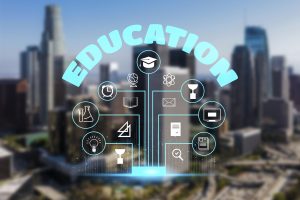 Introduction:
Introduction:
Education software has revolutionized the way we learn, bringing interactive and engaging experiences into classrooms and educational settings. These software applications offer a wide range of tools and resources that enhance teaching and learning processes, promote student engagement, and expand knowledge in innovative ways. In this article, we will explore the significance of education software, its impact on the field of education, and the ways it has transformed learning into an interactive and immersive experience.
The Evolution of Education Software:
Education software has evolved significantly alongside advancements in technology. From simple computer-based educational programs to sophisticated web-based platforms and immersive virtual reality applications, education software has transformed the learning landscape. It offers interactive content, personalized learning experiences, and comprehensive educational resources to support both educators and students.
Empowering Teachers and Enhancing Instruction:
Education software empowers teachers by providing them with powerful tools and resources to enhance their instructional methods. These software applications offer features such as lesson planning, content creation, student assessment, and data analysis, allowing teachers to design and deliver more engaging and personalized lessons. Teachers can leverage multimedia content, interactive simulations, and virtual field trips to bring complex concepts to life and cater to diverse learning styles.
Engaging and Interactive Learning Experiences:
Education software fosters interactive and immersive learning experiences for students. Through multimedia presentations, gamified quizzes, virtual experiments, and interactive simulations, students can actively engage with the learning material, participate in hands-on activities, and develop a deeper understanding of the subject matter. Interactive elements within the software spark curiosity, encourage critical thinking, and promote student autonomy.
Personalized Learning and Adaptive Assessments:
Education software supports personalized learning, tailoring educational content and activities to the individual needs and learning pace of each student. Adaptive learning algorithms analyze student performance and provide targeted feedback and recommendations, allowing students to progress at their own pace and focus on areas that require further attention. This personalized approach to learning enhances student outcomes and fosters self-directed learning skills.
Collaborative and Cooperative Learning:
Education software facilitates collaborative and cooperative learning experiences, enabling students to engage in group projects, online discussions, and peer-to-peer collaboration. Communication features within the software encourage students to share ideas, work together, and learn from one another. This collaborative environment nurtures teamwork, communication skills, and the ability to collaborate effectively in the digital age.
Expanding Access to Education:
Education software has the potential to bridge the gap between learners and educational opportunities. It enables remote learning, online courses, and virtual classrooms, allowing students to access educational resources from anywhere in the world. Additionally, education software provides inclusive features for students with diverse needs, ensuring equal access to quality education.
Tracking Progress and Data-Driven Insights:
Education software offers robust data analytics and tracking tools, allowing educators to monitor student progress, identify areas of improvement, and make data-driven decisions. This data helps in understanding student performance trends, adapting instructional strategies, and providing timely interventions to support student success.
Conclusion:
Education software has transformed the way we learn and teach, opening up new possibilities for interactive, engaging, and personalized education. It empowers teachers, engages students, and expands access to educational resources. With advancements in technology and the continuous development of education software, the future of learning is set to be even more immersive, inclusive, and adaptable. By embracing education software, we can leverage its potential to enhance educational outcomes, foster lifelong learning, and prepare students for success in the digital age.
